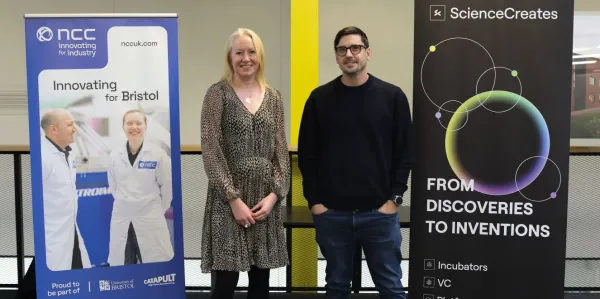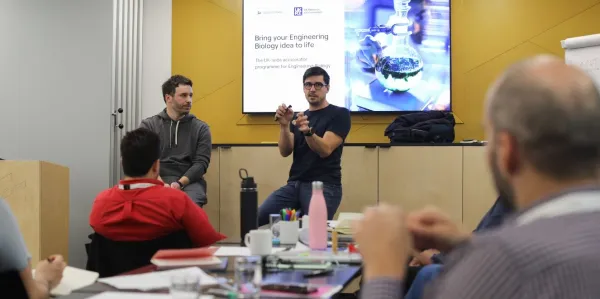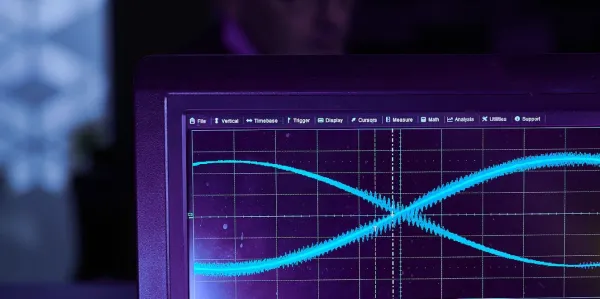The Deep Tech dilemma
How relevant is product-market fit in the new era of Deep Tech startups?

How relevant is product-market fit in the new era of Deep Tech startups?
By John Williams, General Partner at SCVC

The inventor of Product-Market Fit (PMF) defines it as a unique product offering that people desperately want. Or, in another way of looking at it — will the dogs eat the dog food?
Unfortunately, beyond this definition, details are very much left to the imaginations of VCs and founders. Some companies even attain PMF but can’t be confident that’s what they’ve achieved. To complicate matters further, PMF is typically seen as a process: it can be lost just as quickly as it is attained as the market moves.
So why is this term used so frequently within the startup community? Academic research into entrepreneurship and business doesn’t even recognise the term due to its vague definition. Yet it is widely believed that achieving PMF is the holy grail for startups and thus investors.
The origin of the concept comes from Sequoia Capital; the term PMF was coined by Benchmark and popularised by Andreessen Horowitz. It’s difficult to think of three heavier hitting venture firms to argue with, especially since the concept has stood the test of time. But does this wisdom apply to the relatively new world of Deep Tech startups?
Deep Tech describes technologies that require significant R&D and capital expenditure prior to any commercialisation attempt.
We’re talking about the difference between the invention of the MRI machine and the invention of Deliveroo.
Deep Tech startups are typically attempting to commercialise advanced research for the first time. This contrasts with general tech startups, which are utilising existing engineering techniques and technologies to address existing market needs. We’re talking about the difference between the invention of the MRI machine and the invention of Deliveroo.
To VCs, the risk profile of Deep Tech startups is drastically different. Deep Tech companies, unsurprisingly, have larger technical risk, whereas general tech companies tend to be all about market risk. It’s no wonder Marc Andreessen said market size is more important than the product and the team when he popularised PMF.
A quirk of venture capital funds is they tend to be subject to the power law, which observes that a single company in a portfolio is likely to drive most of the fund’s returns. When considering the size of the larger funds, that can only be achieved with eye-watering exit valuations for a single company, now in the tens of billions of dollars. And with general tech, the inherent value of the company is intrinsically linked to its revenue. So that market better be big.
But what about Deep Tech companies? How will they be valued? How do you size a market that doesn’t necessarily exist yet?
A Deep Tech company should come from a position of strong technical IP, often derived from years of research.
In the UK, we usually see this manifest as university spinouts, where the IP has already benefited from significant time and financial resources prior to the company’s inception. A driver of early mergers and acquisitions (M&A) is often larger corporations securing what they think is valuable strategic IP. So, if the tech works, Deep Tech startups are already in an advantageous position compared to general tech in that they don’t necessarily have to achieve PMF at all to see a happy outcome.

But how do Deep Tech startups go about maximising their chances of finding PMF and driving value even further?
General tech companies work backwards. Pick a suitably large market, determine a product that can fill a gap in the market, and then figure out how to build it technologically. Since PMF is a process, the tech, the product and even the market are all variables that can be altered along the way.
This doesn’t work in Deep Tech. If the technology is the result of years of research and millions in funding, it’s not trivial to change the technology because of the PMF feedback loop. And if the technology is less flexible, then careful consideration is needed when designing the product that will ultimately select the market.
Deep Tech companies need a technology-first approach to product design — because if the product isn’t good enough, there’s a limited number of options to adapt. At SCVC, the venture capital arm of Science Creates, we have created a framework used for de-risking Deep Tech companies called Technology-Product Fit (TPF).
Where PMF asks the question “will the market embrace your product?”, TPF asks “does this product exemplify your technology?” Or, to embrace the initial analogy, where PMF asks “will dogs eat the dog food?”, TPF asks “does your technology make dog food that will make dogs live 10 years longer?” If the answer is yes, and your technology allows you to build a product that only you can build, then the competitive landscape looks a lot simpler.
Where PMF asks “will dogs eat the dog food?”, TPF asks “does your technology make dog food that will make dogs live 10 years longer?”
This process even applies to tech giants. Consider the rise of Nvidia, now a company worth $2 trillion that many think has monopolised AI compute. It started life as a graphics card company for gaming. In the pursuit of better-looking graphics, Nvidia released programmable shaders. If these shaders can be programmed to do complex rendering calculations, then they can also be programmed to do general-purpose computations. Nvidia developed and released a general-purpose GPU framework called CUDA to enable this — which would go on to be one of the key catalysts in the growth of deep learning. Nvidia continued this shift to focus on AI in a way that is fully flexible – its USP – and makes the company immune to becoming obsolete as machine learning architectures rapidly evolve. Nvidia’s TPF is its flexibility to deliver high-performance computing in rapidly changing ecosystems. The market takes care of itself.
And what happens when a Deep Tech company doesn’t consider TPF in its early stages? TPF, like PMF, is a process. A startup should spend its formative years developing a series of prototypes to gauge the most appropriate industry option, or vertical, for the technology. This happens in parallel to further development of the core technology, which significantly de-risks the company, as Deep Tech companies have high technology risk. If a company commits to a vertical too quickly, there is little evidence of the compatibility between the technology and the product vertical, and if a company is created around the vertical, it can become a one-way door with little ability to alter its trajectory if the product turns out to be the wrong one.
Imagine you have developed a particularly lightweight composite material and, while seeking market validation, Boeing tells you that your technology would be ideal to use in the tip of aeroplane wings. So, you develop a whole aerospace company with a team of aerospace experts ready to spend years developing this aerospace product. And then, when you finally take it to Boeing or Airbus, they don’t want it. Your technology could have been the perfect smartphone housing, but you can’t pivot it now because you have committed to the wrong vertical and the wrong product.
Unfortunately, this happens too frequently in Deep Tech startups, as there is significant pressure from early-stage VCs, and even university tech-transfer offices, to identify a market and potential customers at the very beginning. Without a process and serious evaluation, it becomes a dice roll whether the selected vertical is correct or not – otherwise, by the time that is apparent, it will be too late. At SCVC, we use the TPF-first approach in all of our decision making processes, because we don’t want to roll that dice.
Continue reading Gravitate - The Deep Tech Founder Magazine






